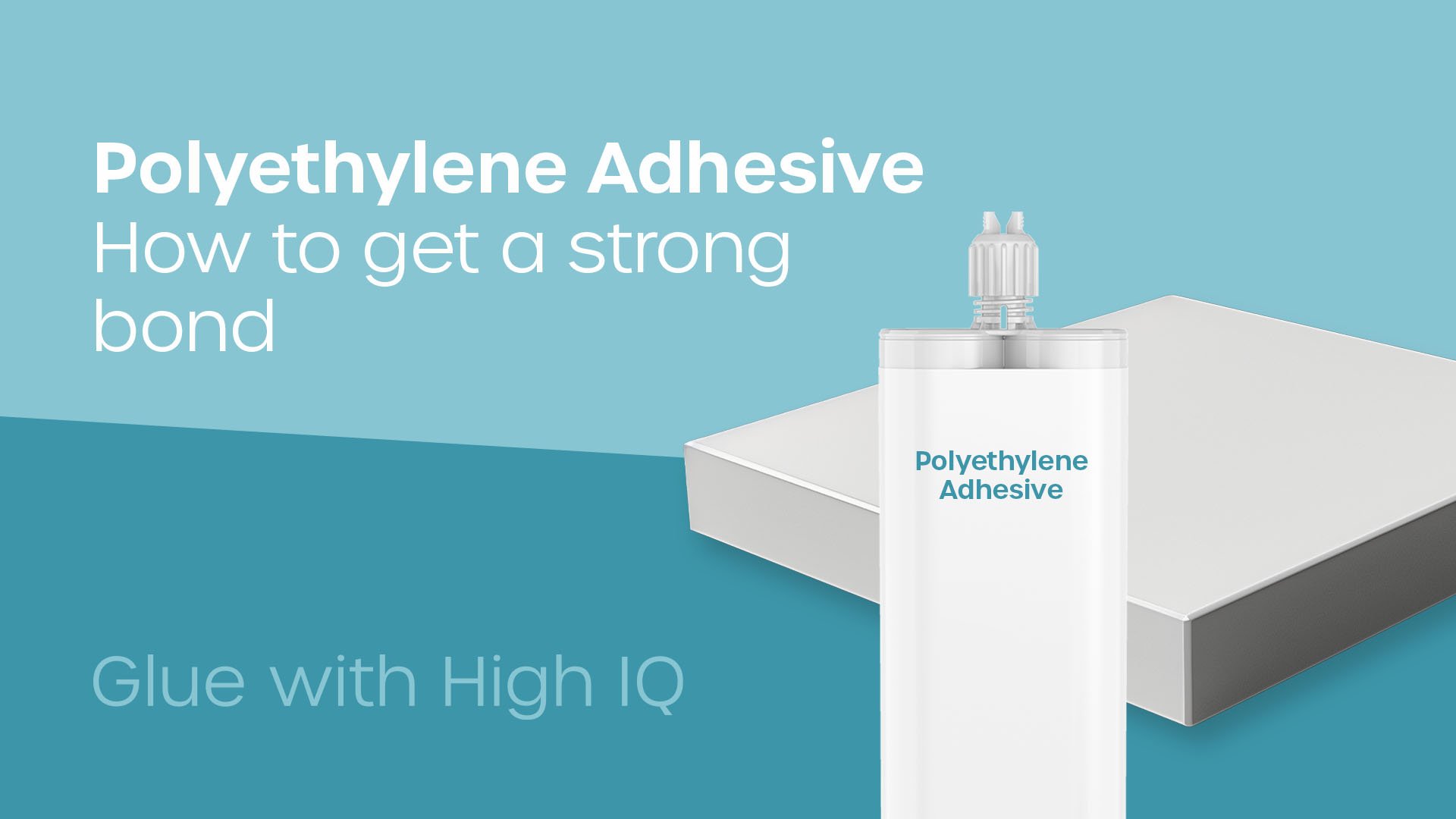Choosing the best Polyethylene Adhesive; What you need to know

Finding the right adhesive is rarely a simple task. It seems there are countless characteristics you need to think about. Finding a polyethylene adhesive is no different. Some would say it's even more challenging (more on that later).
There is no universal answer. A polyethylene adhesive that works for one application may not work for another. It will depend on what you require.
Here at Forgeway, we manufacture thousands of tonnes of adhesives and sealants every year. We know how to help companies solve their bonding challenges.
We wrote this article to help you. We aren't just pushing our adhesive solutions forward. We want you to understand the considerations when selecting a polyethylene adhesive.
By the end of the article, you will understand how to choose the right polyethylene adhesive for your application.
If you want our recommendation for a polyethylene adhesive, look no further than Purok VX90. The bond it formed with polyethylene was so strong that it snapped the plastic before the bond failed.
Why polyethylene is such a popular plastic
People often like to say that Polyethylene (PE) is the most used plastic worldwide. Although it's true, it can be slightly misleading. There are several different types of polyethylene.
The most common types of polyethylene are:
- Ultra-high-molecular-weight polyethylene (UHMWPE) which, as the name suggests, has a very high molecular weight. This makes it a very tough material. Typical applications include chopping boards, gears, and joint replacements.
- High-density polyethylene (HDPE) has a low amount of branching. This means it has high tensile strength. Typically, food cartons, bins, and water pipes use HDPE.
- Medium-density polyethylene (MDPE) has a lower density than HDPE. This means it is more malleable. Gas pipes, carrier bags, and sacks usually contain MDPE.
- Low-density polyethylene (LDPE) has an even lower density than MDPE. It has reduced tensile strength but much more ductility. Usually, LDPE is used for thin single-use bags, plastic film containers, and film wrap.

There are several other types of polyethylene. But you will have come across one of these types today. If you went shopping earlier, you likely used an LDPE bag. You know, the ones that now cost 10p.
Or you may have made yourself a cup of tea with milk from a HDPE carton and a MDPE kettle.
Polyethylene is incredibly versatile. And that's why it is so popular. The versatility makes it a desirable material for manufacturers all around the world.
Is polyethylene challenging to bond?
As most of us know, it's not all sunshine and rainbows. The cynical amongst us would be looking for the catch. So here it is.
Polyethylene is very challenging to bond. Most adhesives will not be able to form a strong chemical bond without significant surface treatment.
That's because polyethylene has a very low surface energy. Typically, polyethylene has a surface energy of around 31 Mj/m². Let's explain what that means for bonding and adhesives.
As some of you will know, surface energy is a material's tendency to attract or repel a liquid. The term 'wetting' refers to how well a liquid will spread over a surface. A material with high surface energy will have good wetting.
The surface is receptive to liquid and is much more likely to form a strong chemical bond. The reverse is true of low surface energy materials like polyethylene.
They repel liquid and will cause the liquid to 'bead' up. This makes a non-receptive surface with which most adhesives will struggle to form a strong chemical bond.

That doesn't mean it's impossible. Some adhesive manufacturers have specifically formulated products to alter the polyethylene's surface. This allows them to penetrate into the material and form a strong chemical and mechanical bond that is often stronger than the material itself.
We are going to talk more about those adhesives in the next section. But you don't just need to rely on a specific polyethylene adhesive. There are other methods of bonding polyethylene.
Primers are available to those who want to use 'normal' adhesives (whatever that means). There are also surface treatment methods that can alter the surface so you can use 'normal' adhesives.
But all three methods have their pros and cons. It depends on which method is best for your application.
What is the best polyethylene adhesive?
Suggesting the 'best' polyethylene adhesive would be like asking a car dealership for the 'best' car you should buy. It is completely subjective. The best polyethylene adhesive for you will entirely depend on your application.
Instead, we will talk about the different options to bond polyethylene as well as some polyethylene adhesives we would recommend to help you make a decision. You can then decide which option is best for you.
Using a primer to bond polyethylene
The use of primers is fading out. Companies like to steer clear of adding another step into their process where possible. Primers are often undesirable.
However, they work. And, they are often quite cheap.
Primers can adhere to the polyethylene surface. Once it has formed a chemical bond, the primer creates a new surface that is more receptive.
This allows the adhesive to form a bond with the primer, which in turn has formed a bond with the polyethylene. As the graphic demonstrates below, it adds an extra layer.

This added layer is why people like to steer clear of primers. It's an added layer that can go wrong with a bond. Primers also take time to form the chemical bond before you can put them into use.
In production and manufacturing facilities, the added cycle time of the primer will reduce the profitability.
However, there can be instances where this added cycle time is irrelevant. The low cost and ease of use of primers makes them an attractive method of bonding polyethylene.
Using surface treatment methods instead of polyethylene adhesive
You could argue that using a primer is a form of surface treatment. You wouldn't be wrong. But here's what we really mean by surface treatment.
Chemically altering the surface of a material is possible through methods like plasma, flame, or corona treatment. Rather than simply adding a layer onto the polyethylene surface, these surface treatment methods can change the surface energy of the plastic.
Not only can they adjust the surface energy, but they will also remove contamination that could be on the surface. One of these surface treatment methods will leave a very receptive and clean surface that ensures you can use most adhesives.
However, these surface treatment methods come with some caveats. They are often very expensive. They also can require special extraction to stop the fumes from harming workers.
In most cases, these surface treatment methods present a very thorough and effective method of converting the surface of polyethylene into a bondable surface.

Which is the best polyethylene adhesive?
The best polyethylene adhesive you can buy is our Purok VX90. It is a structural plastic adhesive with an acrylic formulation. It is a two-component and doesn't require any surface treatment or primers to form a strong bond with polyethylene.
In our tests, the polyethylene samples snapped before the bond pulled apart. The bonded part of the joint was intact. The plastic ripped. Although this can indicate a joint design issue (the plastic wasn't very thick), it still shows how strong the Purok VX90 is.
Nonetheless, if you don't want a sales pitch and you would prefer to look elsewhere, you're in luck. There are other options available for bonding polyethylene. Adhesive manufacturers like 3M, Permabond, and Scott Bader have adhesives that they formulated to bond polyethylene.
Are they as good as Purok VX90? We would say they aren't. But of course, we would say that. Otherwise, we wouldn't recommend it to you in the first place.
If you want to learn more about Purok VX90, click the button below to read more about it. Or, if you want to explore other polyethylene adhesives, a Google search can show you different options.
Ensuring a strong bond with a polyethylene adhesive
As with all adhesives, finding the right polyethylene adhesive is more than just the strength of the bond. There are several characteristics you need to consider when selecting the right choice.
But you might feel a bit stuck. How can you tell which characteristics are important for your application?
Don't worry. We have helped hundreds of companies in a similar situation. We understand it can seem impossible to know whether you are making the right choice.
If you want our recommendation of the best polyethylene adhesive, we would put forward our Purok VX90. There are other options available of course. But we definitely back our product to be the best.
Nonetheless, if the use of a primer or surface treatment also appeals, you should look at whether one of those options is better suited for your application.
Thomas is the Content Manager here at Forgeway. Thomas' job is to translate the technical jargon from the ivory tower of academia into easy-to-read content that everyone can understand. Forgeway's mission is to answer every question our customers and prospective clients ask, or are apprehensive to ask.




